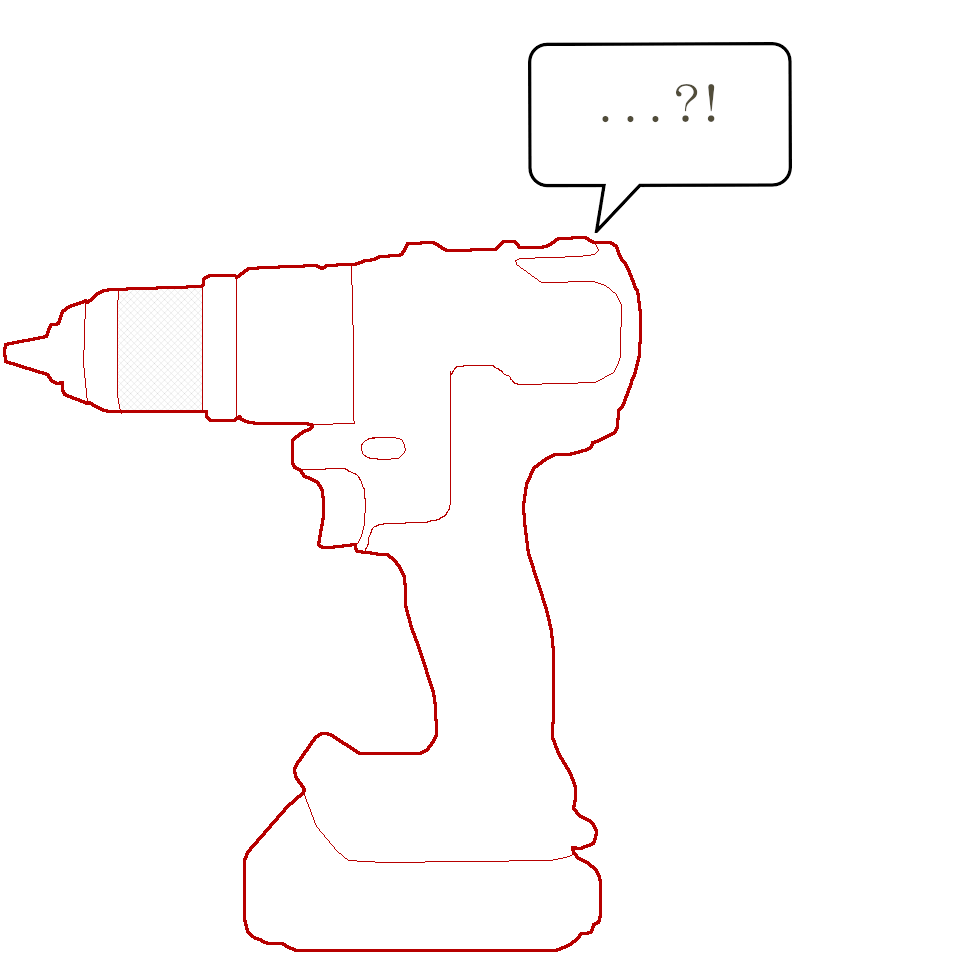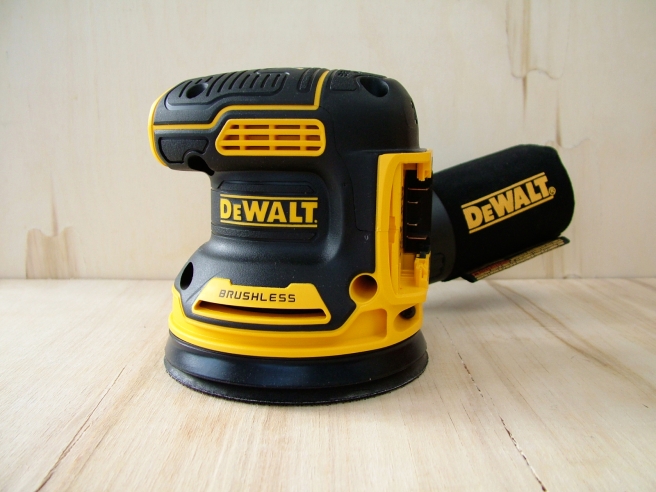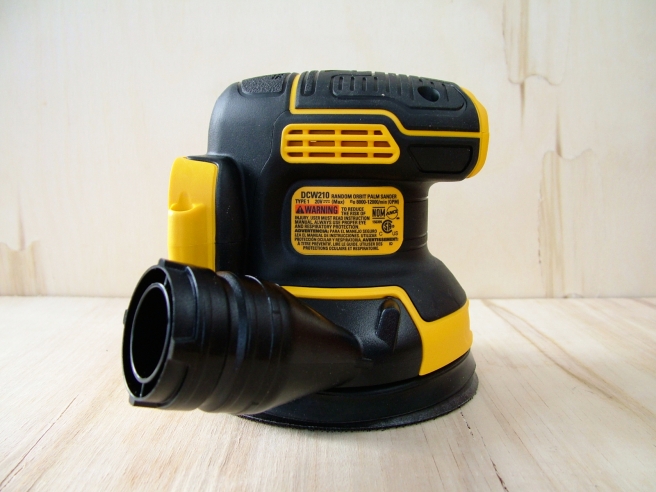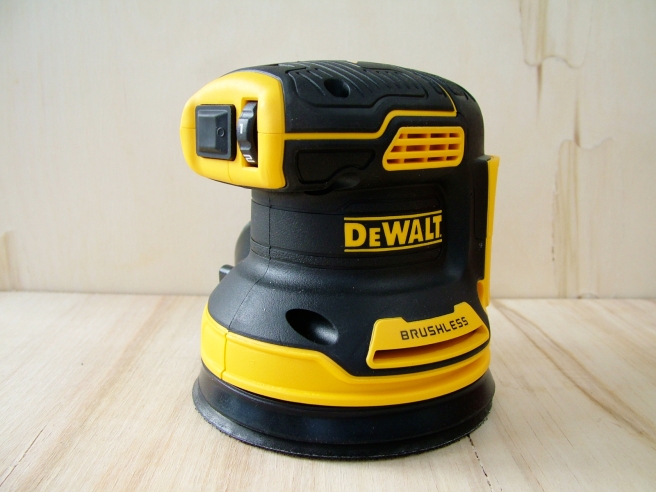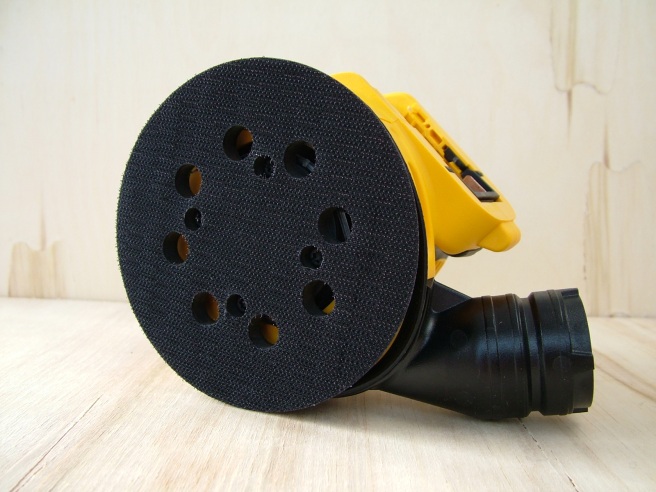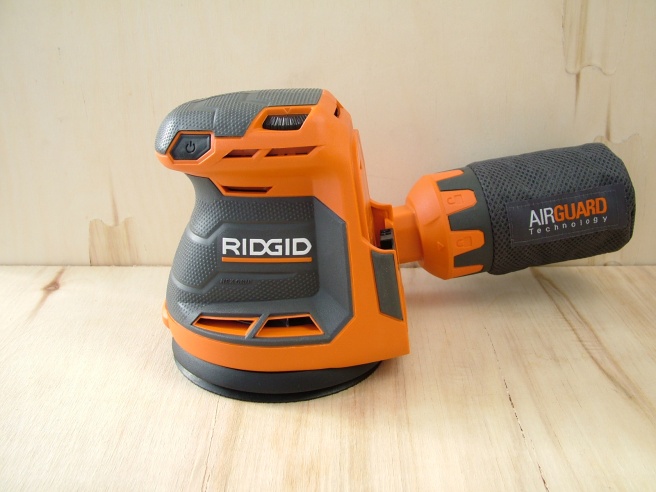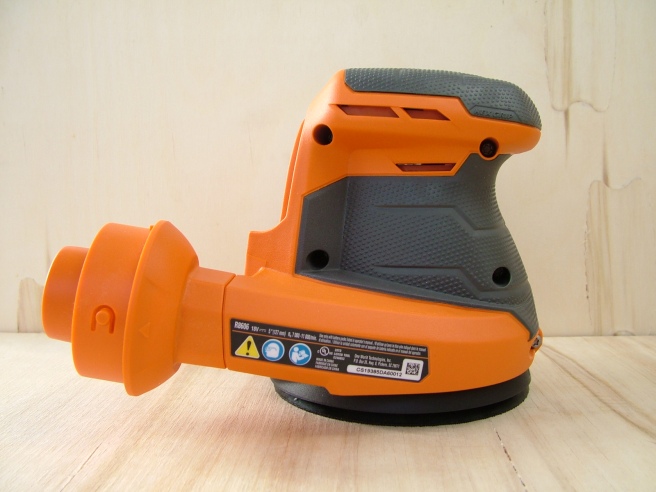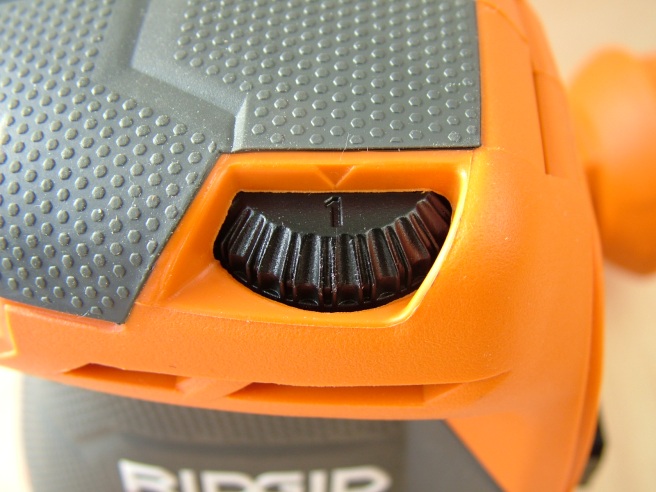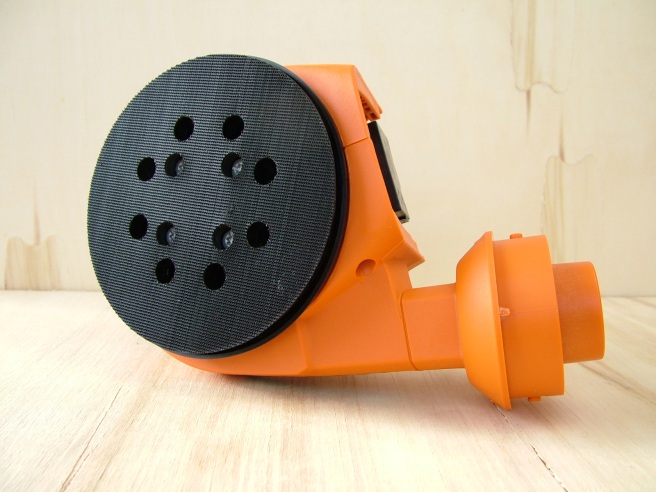When it comes to finishing work the random orbital sander is an indispensable tool, saving you both time and effort, also making things a bit more fun than hand sanding. Simply throw on a high quality sanding disc and sand your work-piece to perfection, moving from a coarse grit up to the finest you desire.
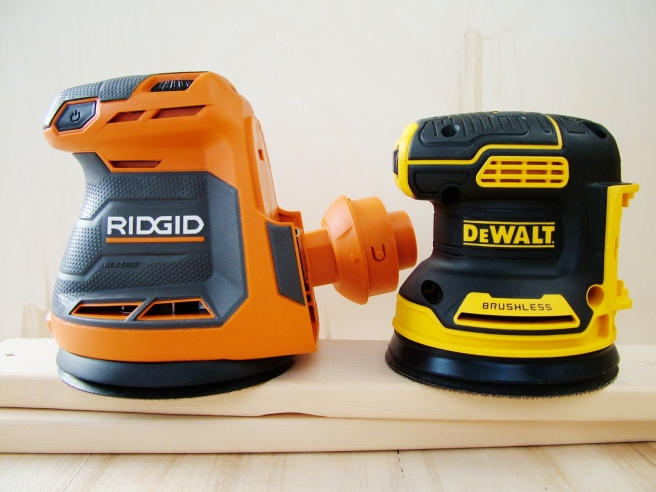
I’m going to compare two popular models on the market: the DeWALT 20V MAX DCW210B and the RIDGID GEN5X 18V R8606B, which share similar features such as variable speed and dust collection attachment. At the same time there does exist some key differences between them which I’ll point out below. This may help those who are hesitating over which to buy make a decision.
Size & Weight
It’s pretty obvious from the photo above that the RIDGID sander is taller in height. The advantage of this is that you’ll be able to hold it by its side instead of its head; the DeWALT doesn’t have a long enough neck that can be held in this way.
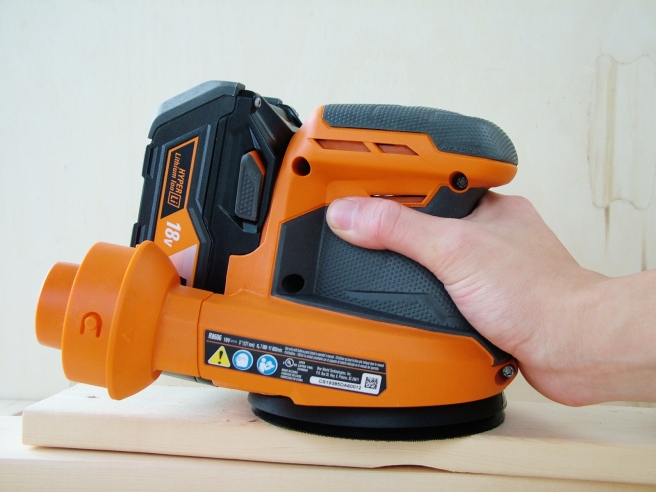
Having a bit of extra weight on an orbital sander means you don’t need to press down at all (you should never press down hard, a common beginner mistake), simply let the tool do the work for you.
- DCW210B: 2 lb 8 oz / 1.1 kg
- R8606B: 3 lb 10 oz / 1.6 kg
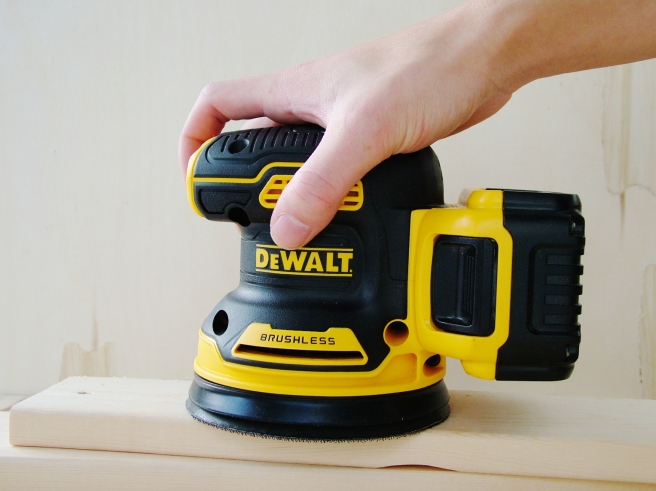
There’s a difference of roughly the weight of a 2AH battery (1 lbs) between the two. Not much, though it’ll probably bother you when you’re sanding on a vertical surface, where extra weight will strain your wrist.
Performance
Nearly all orbital sanders use OPM (orbits per minute), for some reason RIDGID decides to use RPM. Those who are familiar with car polishers know that RPM is used for rating rotary sanders; Dual Action polishers, which work similar to random orbits, uses OPM. I sent Ridgid an inquiry asking them to clear this up, but have yet to hear back from them. Will update if they reply.
- DCW210B: 8,000-12,000 OPM
- R8606B: 7,000-11,000 RPM
Unfortunately there’s no direct conversion between RPM and OPM, but judging from the sanding performance I see no practical difference between the two when operating at the same speed number.
The DEWALT sounds somewhat quieter, possibly due to it employing a brushless motor, resulting in less motor noise and outputting a lower frequency sound, which is perceived to be less noisy by our ears. When they reach high speeds they both become pretty loud, which is when hearing protection becomes necessary.
RIDGID advertises this sander, as well as many other GEN5X tools, as using a “permanent magnet motor” that “maintains speed and power under load”. This can create some confusion for people, as the term “permanent magnet motor” is a bit ambiguous.
There exists two types of PM motors, namely:
- Permanent Magnet Synchronous Motor (PMSM), and
- Permanent Magnet DC Motor (PMDC)
The former places its magnets on the rotor, is brushless, functions similar to Brushless DC Motor (BLDC), except that it uses AC supply. It is used on electric cars such as Chevy Bolt and Tesla Model 3.
The latter places its magnets on the stator, is brushed, and uses DC supply. It is seen on everyday things such as appliances and toys.
So while the RIDGID sander employs a brushed motor, its run time is still very impressive thanks to their breakthrough in improving brushed motor performance, allowing for 50 minutes of continuous sanding on their 5AH battery. However keep in mind that this tool is not OCTANE, meaning you won’t get any additional benefit by using an OCTANE battery.
At the same time many GEN5X tools do use a brushless motor, e.g. the StealthForce Pulse Driver, so keep an eye out for the term when purchasing if you care about extra runtime and power, it will usually be listed clearly on the box as “brushless”.
Details
- The DEWALT sander has the variable speed dial at the front besides the switch, and displays white digits for better visibility
- It has a shorter vacuum port, a very tight grip on the battery due to rubber placed near the terminal providing friction. Batteries are therefore hard to remove, the benefit is that there’s virtually no vibration resulting from a loose battery.
- The hook & loop pad is smaller than the RIDGID by a 1/16″, not a big deal though
- The RIDGID sander puts the variable speed dial on the side, and has indented digits that aren’t as easy to identify
- It has a longer vacuum port and a slightly larger dust bag.
- Hook and loop pad is equally good as the DEWALT being durable and has a tenacious grip on sanding discs.
- Dust collection seems to be very good even without a vacuum attached.
Final words
Both these sanders perform exceptionally well, with the DeWALT DCW210 more similar to traditional corded sander due to its smaller size and lightweight; the RIDGID being a less expensive choice offers nearly the same performance, and although seemingly louder than the DeWALT by a bit, is really much quieter when compared to corded ones.
I would recommend getting the brand which you already have chargers and batteries for, since there’s no reason for having convert to another platform just for a sander. But if you own both platforms, then you have a choice to make. If you’re a heavy duty user and do sanding on vertical sidings, then the DeWALT may be more favorable; for the regular user who just wants a cordless sander for wood finishing, the RIDGID sander won’t disappoint you at all.
That’s it for this week, please subscribe and leave comments below!
